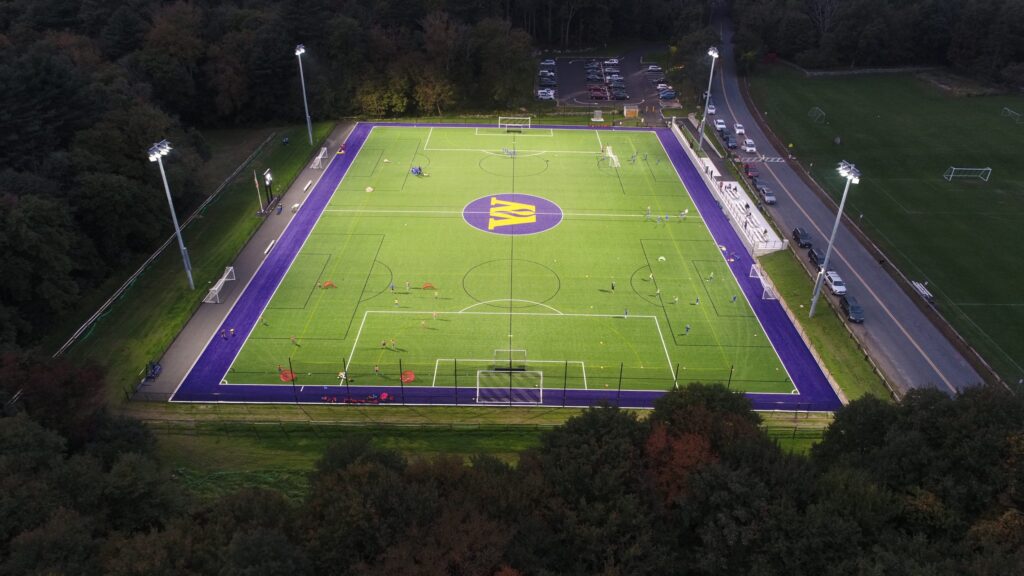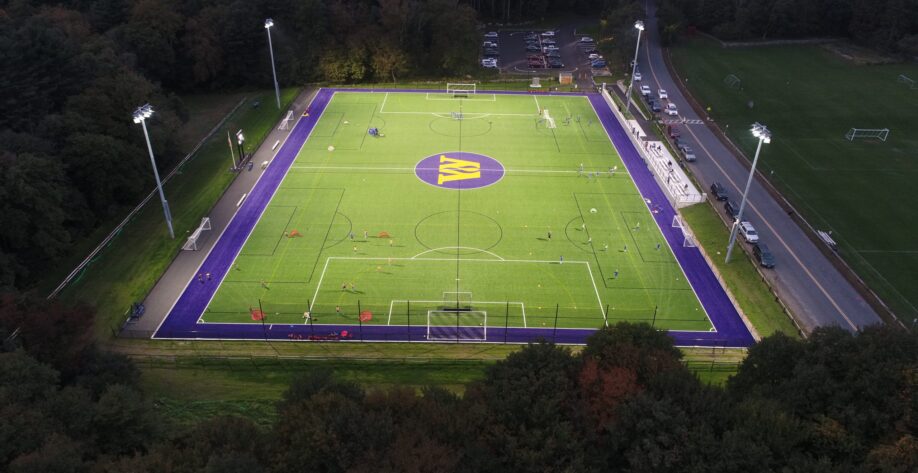
Athletic lighting can increase a school or municipality’s ability to use and play on their fields at night, which is a benefit to athletes and communities. It can double or perhaps even triple a field’s scheduled uses, provided that the turf system can sustain the increased use. These systems often require approvals in most municipalities. This will vary depending on bylaws, regulations, and community feedback.
Athletic field lighting can sometimes create issues with abutters due to glare and light spillage. Lighting companies have developed ways to address these concerns. One effective method is using advanced light shields, which can control the direction of the light and reduce glare. Another common practice is to increase the mounting height of the lighting fixtures, which promotes a more vertical lighting direction. At lower mounting heights, light is cast horizontally creating more glare and light spillage onto adjacent properties. Increasing the mounting height may also reduce the number of light fixtures needed to maintain safe light levels across the field, which can effectively be more cost efficient. However, many cities and towns have buildable height restrictions, in which case a variance is required prior to construction.
Many cities and towns have local bylaws pertaining to the color temperature of the lights. Typically, if the city/town has a color temperature bylaw, it’s associated with indoor lighting and not the most efficient to produce the required illumination for safe outdoor athletic fields. The industry standard for outdoor sports lighting is to have a higher temperature, producing a crisper white with a slight blue tint, which provides optimum color for clarity, contrast, and efficiency. The higher color temperature can reduce the number of light fixtures needed to provide safer playing conditions.
Tagged In:
Athletic Facilities Planning & Design
